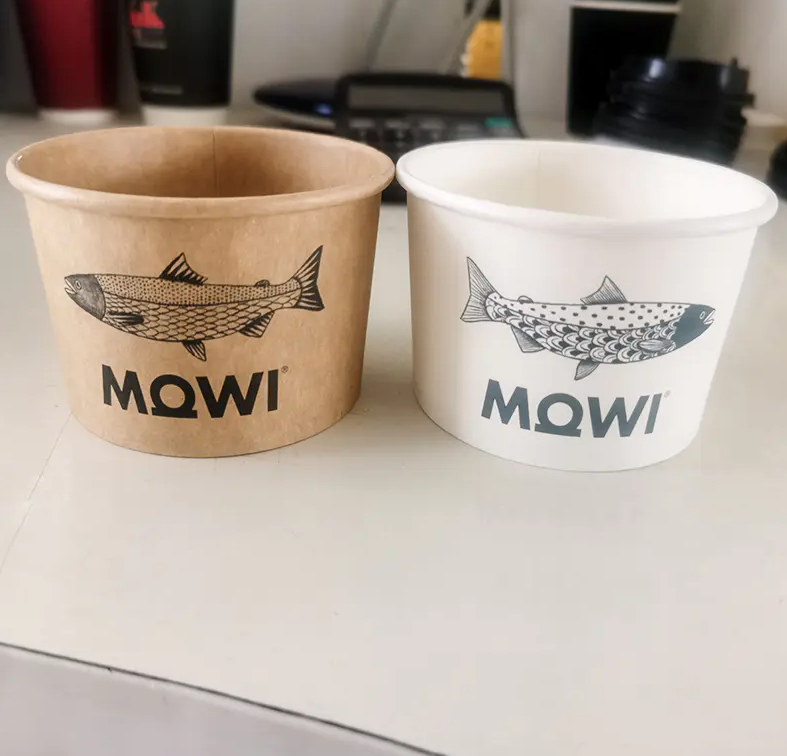As more food establishments move toward sustainable packaging, paper-based containers have gained popularity, especially for Paper Soup Buckets and hot meals. One of the key concerns surrounding these eco-conscious options is whether they can truly hold hot liquids like boiling broth or creamy stew without leaking or deforming. This article evaluates the thermal performance and structural reliability of paper-based soup containers under high-temperature conditions.
To begin with, most modern paper-based soup buckets are not made from regular paper alone. They are typically crafted using high-quality, food-grade paperboard and feature an inner lining—usually polyethylene (PE), polylactic acid (PLA), or other biodegradable coatings. These linings play a crucial role in preventing liquid seepage and ensuring the paper does not absorb moisture. Some manufacturers even use double-wall designs for additional insulation and structural strength.
Temperature resistance is largely determined by the combination of the base material and the inner coating. Standard food-grade PE-lined buckets, for instance, can comfortably handle temperatures up to 90°C (194°F), making them suitable for most soups. However, extreme boiling temperatures above 100°C (212°F) can stress the material if the container is not designed for such conditions. Buckets made with PLA, a plant-based bioplastic, also perform well with hot foods but may have slightly lower heat tolerance than PE variants.
Deformation usually occurs when hot liquid is poured too quickly into a thin-walled or poorly manufactured container. In high-quality buckets, the structure is rigid enough to maintain its shape under full load. Buckets with reinforced rims and thicker bases are better equipped to resist warping and softening when filled with hot contents. Additionally, a well-fitted lid made from matching material helps contain heat and prevents spillage.
Seepage, on the other hand, is more related to the integrity of the inner lining and the sealing of seams. When manufacturing processes are precise and quality checks are in place, the risk of leakage drops significantly. Any breach in the coating or seam structure can result in softening of the outer paper wall and eventual leaks. Hence, consistent production quality is vital.
Another consideration is how long the hot liquid is expected to remain in the container. While short-term usage (15–30 minutes) is generally safe for most commercial paper soup containers, prolonged exposure may increase the risk of weakening, particularly if the container is transported, tilted, or stacked.
In summary, while paper-based soup containers are a convenient and eco-friendly option, their ability to withstand high temperatures without deforming or leaking depends on material quality, structural design, and coating technology. When sourced from reputable suppliers, these containers perform reliably under typical use conditions involving hot soup, sauces, or stews. However, it remains crucial for businesses to choose products specifically tested for heat resistance to ensure a safe and pleasant customer experience.
